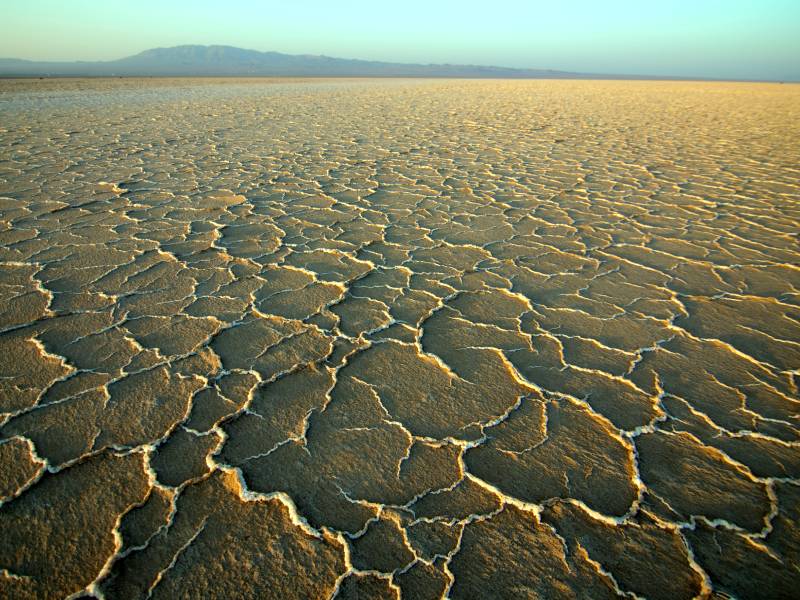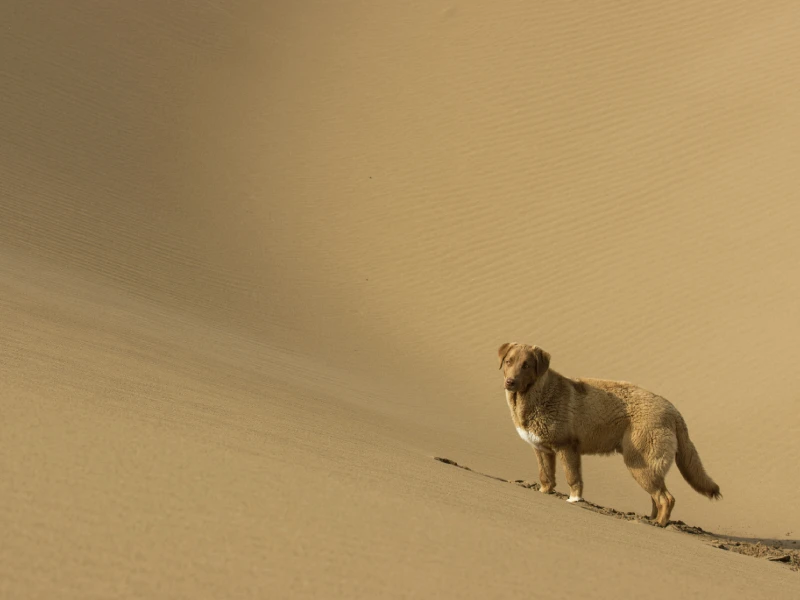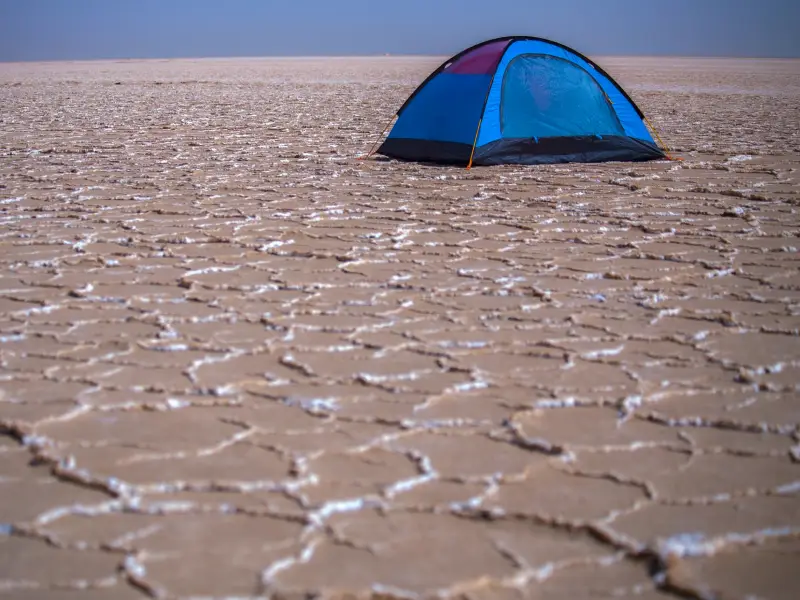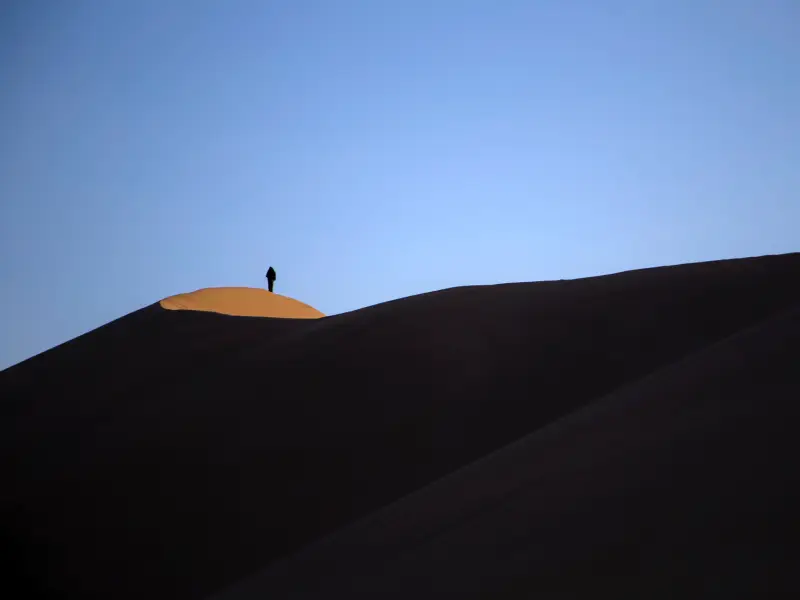Kavir Desert (Dasht-e Kavir): Map, Facts, Location
Nearly a quarter of vast Iran is made up of desert regions. Among these, the Kavir Desert and the Lut Desert are the most well-known among people, covering a total area of about 360,000 square kilometers.
The Dasht-e Kavir, also known as the Great Salt Desert, Central Desert, or Kavir Desert, is one of the world’s largest salt flats, stretching 800 kilometers in length and 600 kilometers in width. However, the Kavir Desert is not a uniform desert but has different climates and landscapes within it. Join us to explore this unique natural wonder.
Dasht e Kavir History
Dasht-e Kavir’s history is woven into the fabric of Iran’s past. This vast desert has been a vital trade route for centuries, connecting Iran to neighboring regions.
Along its ancient trails, travelers can discover the remnants of caravanserais, where merchants and traders once rested during their arduous journeys.
These historical works offer a glimpse into the desert’s role in facilitating cultural exchange and commerce. Additionally, the desert’s nomadic communities have preserved traditional ways of life for generations, providing tourists with a unique opportunity to learn about their enduring cultures and practices.
Kavir Salt Desert
The Kavir Salt Desert, also known as Dasht-e Kavir, has expanded its extent in the heart of Iran. It reaches the Alborz mountain range from the north, the Pir-Hajat Mountains and the Bafgh Mountains from the east, the Damghan-Jandaq connecting road from the west, and the Khur-Tabas estuary connecting road from the south.
This huge desert, with more than 800 km in length and almost 600 km in width, is the largest desert in Iran. The Kavir Salt Desert can be considered the broadest desert in Iran, starting from the southern slopes of the Alborz Mountains and extending to the central regions of the country.

Within the embrace of this desert, you can find desolate wildernesses and protected areas like Marvast, Damghan, and Khartouran. In the western part of the desert, there lies a salt desert that is one of the hottest places on Earth.
During the scorching summer, the temperature can soar to over 50 degrees Celsius (122 degrees Fahrenheit), and the difference in temperature between day and night can be as much as 70 degrees Celsius (158 degrees Fahrenheit).
The average height of the Kavir Desert is nearly 700 meters above the world’s open waters. Its lowest point, situated in the central regions of the desert, reaches about 650 meters, while its highest point, located to the north near Lake Namak-Khor and Bayazeh Desert, reaches a height of around 838 meters.
Kavir Desert Weather
Kavir Desert temperature is characterized by extremes, and it experiences some of the most intense climate conditions on our planet. During the hot summer months, temperatures can reach above 50 degrees Celsius (122 degrees Fahrenheit).
This searing heat can make the desert floor feel like a burning furnace, and finding shelter from the scorching sun becomes a priority for any traveler.
The temperature difference between day and night in the Kavir Desert is astonishing, often reaching a staggering 70 degrees Celsius (158 degrees Fahrenheit). This high fluctuation is a testimony to the desert’s unique climate.

Rainfall in the Dasht-e Kavir is low, and the desert is classified as hyper-arid. Precipitation mostly occurs in the form of sporadic and unpredictable rain showers, making it challenging for plants and animals to thrive.
However, the flora of the Kavir Desert has adapted to these harsh conditions, with salt-tolerant halophytes being the dominant plant species.
In the heart of this desert, travelers must prepare for the blazing heat during the day and the cooling chill of the desert nights, as the temperature can drop significantly after the sun sets.
This climate creates an environment of extremes, where survival is a remarkable feat, and the desert’s unique beauty shines through its ever-changing landscapes.
Kavir Desert Animals
The Kavir desert is home to a variety of animals, each of which is adapted to its harsh and dry environment. Let’s discover the amazing creatures that live in this vast desert.
Plant Life
In the Kavir Desert, most of the plant life consists of halophytes, which are plants specially designed to thrive in salty soils. These hardy plants have evolved to withstand the desert’s challenging conditions.
Central Desert
In the central parts of the Kavir Desert, where there are no natural water springs, both plant and animal life are scarce. The absence of permanent water sources makes this region challenging for plants and animals to survive.
Southern Margins
The southern edges of the Kavir Desert and its bordering areas host a diverse range of wildlife. Here, you can find creatures like the sand cat, sand fox, jerboa, gazelle, hare, monitor lizard, and various bird species, including the saker falcon. In the higher elevations, you may come across wild goats and more.

Scorpions
The Kavir Desert is also known for its scorpions, among which we can mention the golden scorpion, the black scorpion, the fat tail scorpion, etc. These arachnids have adapted to the harsh desert conditions and can be found in the region.
Adaptation
Kavir Desert animals have developed remarkable adaptations to survive the extreme heat and lack of water. They have developed efficient water-conservation mechanisms and often come out to forage during the cooler evening hours when the desert temperature drops.
In the Kavir Desert, life is a constant battle against the elements, but these resilient animals have found their place in this unforgiving landscape. Their ability to endure and survive in the face of such challenges is a testament to the wonders of nature’s adaptability.
Kavir Desert Facts
Dashte Kavir is a remarkable natural wonder in central Iran. The desert is incredibly flat, and the landscape is often characterized by vast salt flats and salt pans, which are the remains of ancient lakes.
Interestingly, this desert was once submerged under water, and the salt flats are proof of its geological history. The salt crusts here are so thick that you can even drive across them in some areas.

Additionally, Dashte Kavir experiences minimal rainfall, earning it the classification of a hyper-arid desert.
Despite the harsh conditions, life has found a way to continue in this desert, with plants and animals that can withstand extreme temperatures and lack of water. It is a place where the beauty of desolation meets the mysteries of Earth’s geological past, making it a unique destination for exploration.
Kavir Desert Tourism
Kavir Desert tourism offers a unique combination of natural wonders and cultural experiences. The vast sand dunes and salt flats are the main attractions that invite adventure seekers for activities like sandboarding and desert safaris.
The desert’s deceptive mirages, where distant objects seem closer than they are, are a sight to behold. Wildlife enthusiasts can spot desert creatures like the fennec fox and sand gazelle, while cultural enthusiasts can explore ancient caravanserais and interact with resilient nomadic communities.
With its otherworldly landscapes and rich history, the Kavir Desert promises an unforgettable adventure for those seeking a taste of Iran’s arid beauty.
Dasht-e Kavir Desert Location
Dashte-e Kavir, which is located in the center of Iran, is easily accessible from different directions. While there are no major cities in the desert itself, several towns and cities surround it, providing entry points for adventurous explorers.
From the north, you can get close to the desert from cities like Tehran and Semnan. From the east, the cities of Yazd and Kerman are gateways to enter the vast desert.

On the western side, the city of Qom is the starting point for those interested in exploring the vastness of the desert. In addition, from the south, you can access the desert from cities such as Isfahan and Shiraz.
These urban centers with proper communication make traveling to the desert plain relatively easy for travelers.
Kavir Desert Map
The Dasht-e Kavir on the map of Iran is like the heart of a vast desert that beats in the center of the country. When you look at the map, you will notice this vast desert covering a significant part of Iran’s central region.
It stretches from the northern foothills of the Alborz Mountains to the east, reaching out towards the Pir-Hajat and Bafgh Mountains. On the map, this desert forms a vast, irregular shape, spanning over 800 kilometers in length and nearly 600 kilometers in width, making it one of the largest deserts in Iran.
Final Word
The Kavir Desert, with its vast desolation and striking beauty, is a place that captivates you with its own beauty. Its endless sand dunes, searing temperatures, and ever-shifting landscapes create a world unlike any other. Yet, amidst the harshness of this environment, life goes on in remarkable ways.
Plants and animals have cleverly adapted to survive, and nomadic communities continue their age-old traditions. The desert also bears the scars of ancient civilizations, with caravanserais and historical relics dotting the arid landscape, telling stories of the desert’s pivotal role in Iran’s trade and culture.
Exploring the Kavir Desert is a journey into the heart of Iran’s natural and cultural heritage. If you ever travel to Iran, never miss visiting this magnificent desert.
Are you planning to travel to Iran and looking for an Iran resort? Consider Matinabad eco resort.





Leave a Reply
Want to join the discussion?Feel free to contribute!